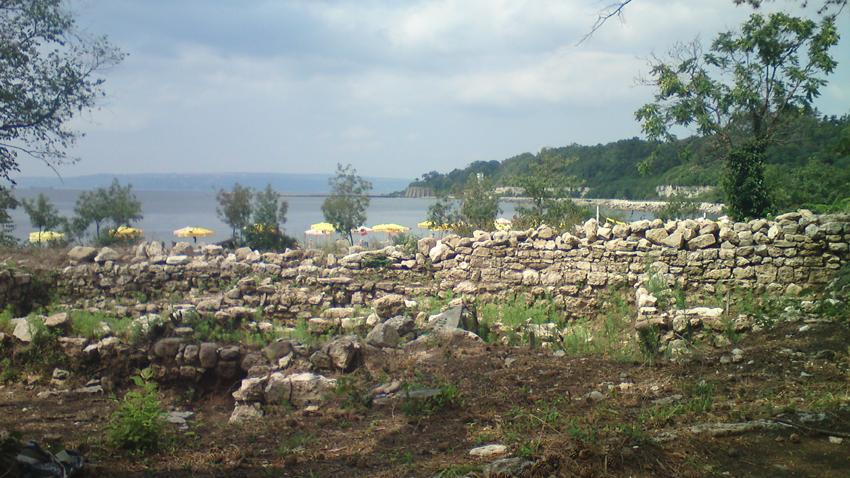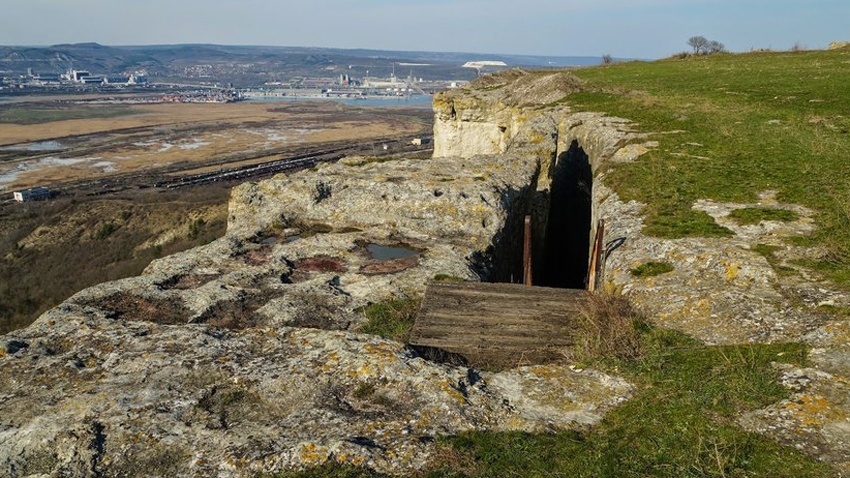“One of the few preserved medieval Bulgarian cities where no latter-day buildings have been constructed,” that is how archaeologist Prof. Valentin Pletnyov, director of the Regional Museum of History in Varna describes Kastritsi fortress.
The city has escaped treasure hunters for 120 whole years. The reason? The medieval settlement is within the bounds of the Evksinograd government residence. In our day, archaeologists have been laying bare the old city with its streets, fortifications and have been studying the architecture of the buildings and the artifacts inside.

“The dig here, directed by myself goes back 10 years, we have uncovered practically the entire western portion of the city, with some one hundred buildings, one- and two-storey houses,” says Valentin Pletnyov. “As in any medieval city, the houses fan out along cobblestone streets. The walls of the buildings we found are relatively well preserved, some reach a height of almost two meters. There are even doors, gates and the lower part of window frames. What we have done is to uncover the lower parts of the buildings we discovered. We found that they were mostly two-storey buildings – we have been finding fragments of lightweight structures from the upper floors. The city had a substantial fortification system – a wall cutting off St. Yani cape where the city once stood. It was a sizeable wall by medieval standards - around 200 meters long. The wall had turrets, part of a well-preserved defence system – the town existed from the 5th to the 7th century when it was destroyed by the Avars and the Slavs.”
As trade picked up along the Black sea coastline in the 13th century and Bulgarian towns emerged during the time of the second Bulgarian kingdom (1337-1420) the settlement was restored with a new town plan. The remains of the ancient buildings were used for the construction of the new medieval city, making Kastritsi a godsend for archaeologists.
“We have been finding buildings with a lot of pottery inside, jewellery, coins, objects made of metal, crosses, including encolpions (crosses containing holy relics). Two small churches have been unearthed so far, I am hoping to find the cathedral temple in the city in the coming years – we have found signs of its existence,” says the archaeologist.
All streets and town squares are there to be seen as they once stood. A programme for turning Kastritsi into a museum, along with the one-time royal stables of Evksinograd palace is currently underway, under Council of Ministers projects. Kastritsi is now undergoing restoration - quite a few of the fortress walls are being restored up to the point they were unearthed. The house walls are fortified, the homes are well preserved, walkways have been made under the supervision of archaeologists. Tourists are expected here by the summer or autumn of next year.

Valentin Pletnyov has been working on another important site – the Petrich medieval fortress-city near Avren, Varna district.
“The fortress rises on a cliff overhanging Lake Devnya. Like Kastritsi, Petrich is an ancient as well as a medieval city. It is a fortress we have read about in the descriptions of the battles fought by Vladislav Varnenchik, we even know the date on which the knights captured and pillaged it – 7 November 1444. At the insistence of Avren municipality, we started excavations last year; we have unearthed parts of two Christian churches and a great many finds. The city existed from the 9th right up to almost the mid-15th century when it was destroyed and abandoned. Unfortunately, there is no surveillance here and at the beginning of the 20th century, when many railway lines and roadways were being built in Bulgaria, the walls of many of the fortresses in the country were destroyed and the stones were used for construction – and the authorities knew this was being done. This was done in Devnya and in many other parts of the country.”
English version: Milena Daynova
Photos: archiveOn November 30, the Bulgarian Orthodox Church honors the memory of St. Apostle Andrew . In Bulgaria the saint is known as Saint Andrey and the folk holiday as Andreevden . Saint Andrew’s Day gives the start to the series of winter holidays..
The head of the statue of Tyche, the goddess of Philippopolis, has been discovered in the Episcopal Basilica in Plovdiv, said the head of the excavations Lyubomir Merdzhanov. According to him, this is an extremely rare artefact that has been awaited..
105 years ago, on November 27, 1919, a treaty was signed in the Parisian suburb of Neuilly-sur-Seine, officially ending Bulgaria's participation in World War I (1914-1918). Historians define the document as "another national..
On November 30, the Bulgarian Orthodox Church honors the memory of St. Apostle Andrew . In Bulgaria the saint is known as Saint Andrey and the folk..

+359 2 9336 661
